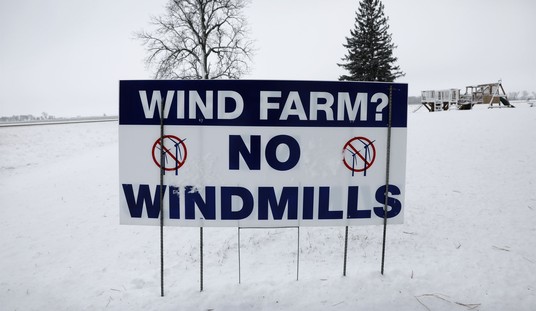Actually, given the utter failure to replace the destroyed jobs over the last two years in this economy, the bigger surprise may have been that the numbers were dropping — until now. Bloomberg reports that the percentage of home mortgages with one or more overdue payments rose in the second quarter, the first such increase in more than a year. It might reflect the decline of the economy in the prelude to “Recovery Summer,” but it’s probably more useful as a signal of another wave of foreclosures:
The percentage of U.S. mortgages with one overdue payment rose in the second quarter, the first gain in early delinquencies in more than a year, as economic growth slowed and jobless claims rose.
Home loans overdue by a month rose to 3.51 percent, from 3.45 percent in the first quarter, according to a report today from the Washington-based Mortgage Bankers Association.
The gain suggests a slowing economy may increase foreclosures as mortgage holders lose their jobs, said Jay Brinkmann, chief economist of the group. New unemployment claims, measured as a monthly average, rose throughout the second quarter after falling in most of the prior period, according to data from the Labor Department in Washington.
“As we work through the bucket of troubled loans, we’re seeing an increase in a new crop of troubled loans,” Brinkmann said in an interview. “It’s primarily driven by the jobs market. It still takes a paycheck to make a mortgage payment.”
It’s an incremental increase, mainly significant for its direction and not its magnitude. Absent other indicators, it would probably not mean much at all. Furthermore, we don’t necessarily have enough context to know where a panic level is; it’s possible that this indicator fell far enough that a small rebound was inevitable, as foreclosures weeded out the failing borrowers and the averages returned to normal.
In fact, the news is a little more mixed — but still not good — when looking at the full summary from MBA:
“These latest delinquency numbers contain a mixture of somewhat good news and somewhat bad news. The good news is that foreclosure starts are down and the inventory of homes anywhere in the process of foreclosure fell for the first time since 2006 and had the largest drop since 2005. Loans 90 days or more past due, the largest share of delinquent loans, also fell. The fact that both the 90+ delinquency rate fell and the foreclosure start rate fell means that a significant number of these seriously delinquent loans have been successfully modified and reclassified as performing, current loans,” said Jay Brinkmann, MBA’s chief economist.
“The disappointing news is that, after declining since the beginning of 2009, the rate of short-term delinquencies is going up and the increase in these short-term delinquencies may ultimately drive the foreclosure measures back up. The percent of loans one payment behind had peaked in the first quarter of 2009 at 3.77 percent and fell to 3.31 percent by the end of 2009. Unfortunately that rate has now risen to 3.51 percent. The causes are likely two-fold. First, 30-day delinquencies are very closely tied to first-time claims for unemployment insurance. The number of first-time claims fell through most of 2009 but leveled off in 2010 and have started to rise again. This increase in unemployment directly impacts mortgage delinquencies. Second, some percentage of the loans modified over the last several years have become delinquent again because those borrowers, by definition, have weak credit.
“Ultimately the housing story, whether it is delinquencies, homes sales or housing starts, is an employment story. Only when we see a consistent increase in employment will we see an increase in sales and starts, and a sustained improvement in the delinquency numbers. Until we see the increase in the number of households that comes with an increase in the number of paychecks, all measures of the health of the housing industry will continue to be weak,” Brinkmann said.
In other words, the collection of indicators gives this particular increase a little more weight. While some of the longer-term delinquencies fade away, we are seeing a new wave of potential trouble if jobs don’t start opening up for the unemployed, and soon. Note too that Brinkmann points out the failure of existing foreclosure-avoidance government programs because they have been treating the symptom while ignoring or deepening the disease.
We’re stuck in a cycle of futility, where government interventions create debt and uncertainties that dissuade investors from starting and expanding businesses, and the government thinks that more intervention will solve the trouble. The results of Wreckovery Summer are demonstrating just how badly we have blundered in the wrong direction.








Join the conversation as a VIP Member